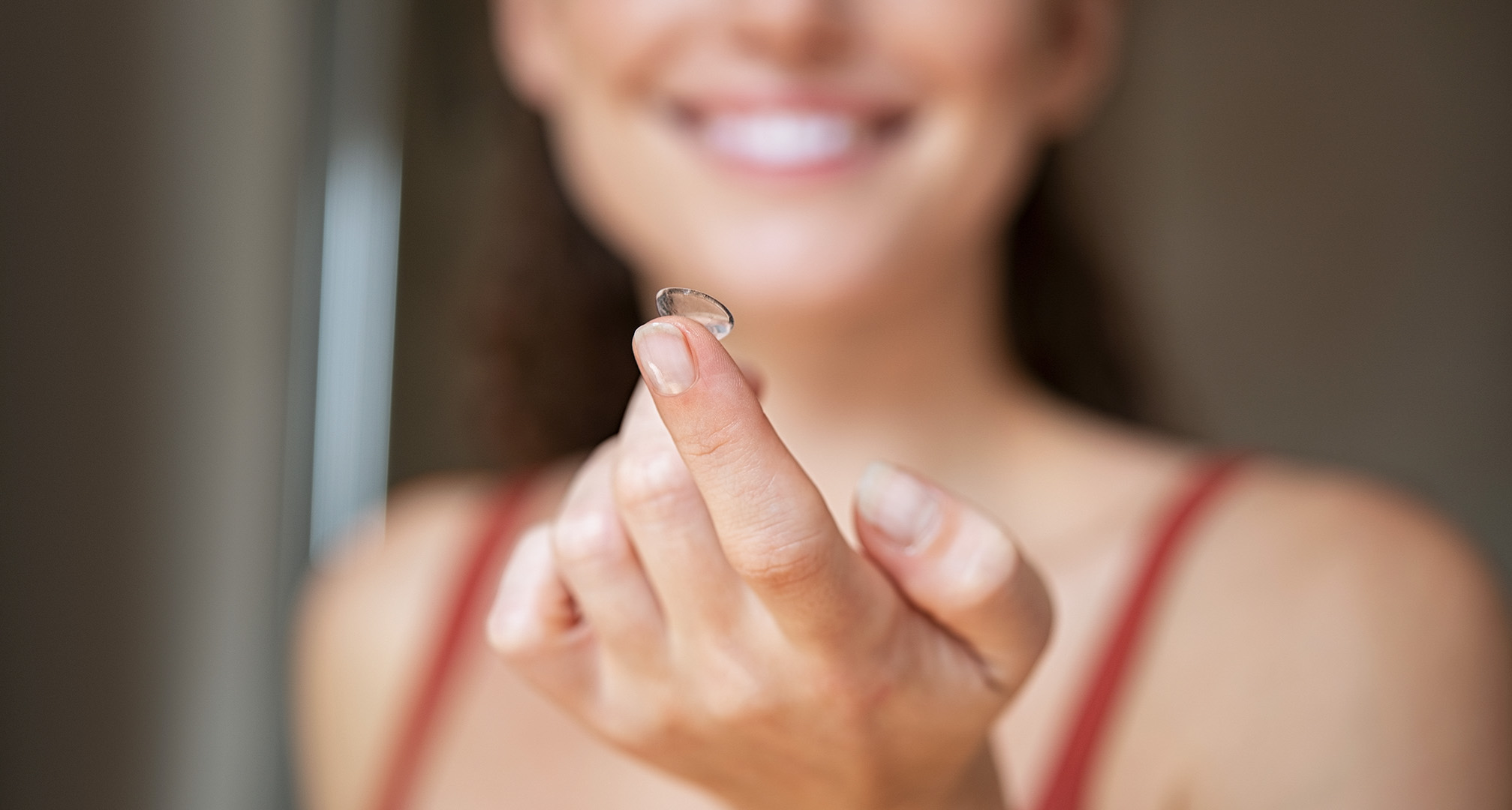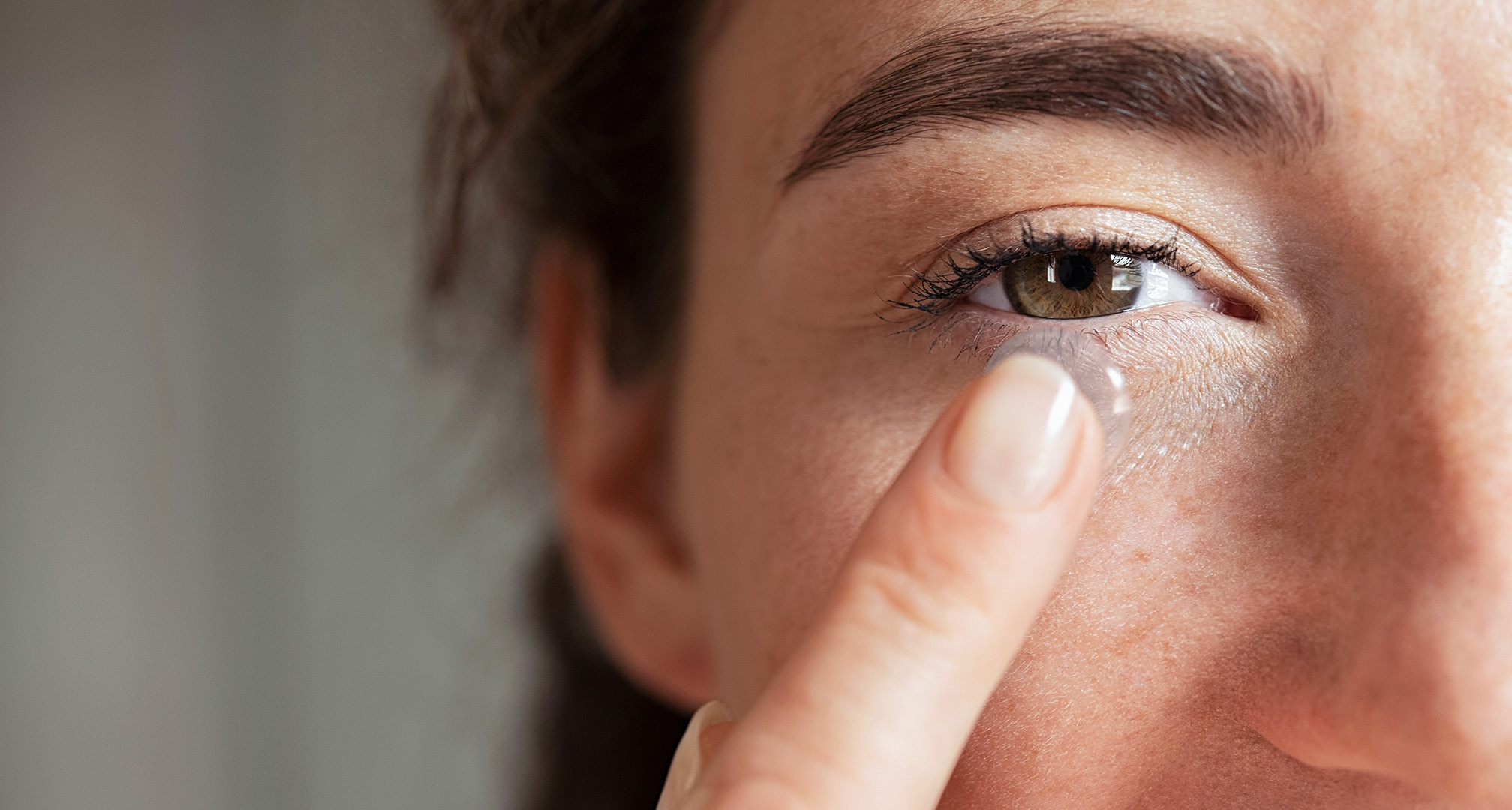Getting used to contacts: How long does it take?

Table of contents
Depending on your situation, it can take anywhere from two days to two weeks to get used to contact lenses. Contacts can be a great alternative to glasses, providing clear vision without cumbersome frames. They're great for active lifestyles or for anyone looking for comfort and convenience.
Why does the adjustment period vary so much?
In this article, we'll explain why the amount of time it takes to get used to contact lenses varies for different situations and lenses. We'll also take a look at common problems you might experience when wearing them for the first time. Take a look at our optician-approved advice about getting used to contact lenses today!
Common problems when getting used to contact lenses
While contact lenses are designed to fit easily and comfortably on your eyes, it may take time to adjust to the feeling on your eye. There are several reasons you might not see well with your lenses. Here are a few common things you may experience as a first-time lens wearer:
- Mild discomfort – You may feel slight discomfort or irritation as your eyes get used to the new sensation.
- Dryness – New wearers are susceptible to dry or itchy eyes. Try to blink normally to keep the eyes moisturised.
- Blurred vision – Blurred vision can occur especially if your contact lenses aren't fitted properly or if they move around on your eye.
- Redness – If you wear your lenses for too long or if they're not properly cleaned, your eyes may appear red or bloodshot.
Helpful hint: If you're wondering whether your symptoms are normal or not, your eye care provider can offer guidance. You should not experience pain when adjusting to your new lenses. Take your lenses out and contact your eye care specialist if pain occurs.
How long does it take to get used to contact lenses?

It may take one to two weeks for new lens wearers to completely adjust to the sensation of contact lenses. Your eye must adjust to having a lens sitting on its surface. Additionally, the brain must get used to a new viewing experience. The amount of time it takes to adjust differs from person to person and depends on the type of lens.
Generally, it will take a maximum of two to three days if your prescription changes but you use the same contact lens model. You shouldn't have any problems with comfort. The brain will just have to get used to new and brighter images. Assuming the correction is correct, the time it takes eyes to adjust to new prescription contacts is also individual and depends on the value of changes.
Fun fact: Getting used to a new correction for contact lenses is easier than adjusting to a correction for new glasses.
Factors that affect how long it takes to get used to contact lenses
The type, quality, and fit of lenses can affect the adjustment time. "If you have daily lenses with good quality materials and the right BC (curvature), it is almost imperceptible," Chief Optician Jakub said when asked about getting used to the feeling of new contact lenses. Here are some other factors that might affect how long it takes to get used to your lenses:
- Type of contact lenses – Soft hydrogel or silicone hydrogel materials, thinner lenses, and proper lens care may shorten the adjustment time.
- Eye sensitivity – Lenses can be irritating if you have sensitive or dry eyes. Keep them clean or try eye drops suitable for use with your lenses.
- Previous experience with contact lenses – First-time lens wearers might need more time to adjust.
- Individual eye anatomy – An eye care specialist must properly fit contact lenses so they sit comfortably on the eye without moving.
How long does it take to get used to contacts for astigmatism?
It will usually take three to four days to get used to contacts for astigmatism. Generally, the adaptation period for toric lenses can be slightly longer when compared to classic spheric corrections. Because toric lenses for astigmatism accommodate visual problems caused by imperfect curvature of the eye, a cylinder correction is needed. This correction is different from standard spherical lenses and it takes the brain time to get used to a new image.
How long does it take to get used to multifocal contacts?
It can take one to two days for your eyes and brain to adjust to multifocal contacts. Some may find it can take a week or more, especially for those who haven't worn lenses before. Wearers may experience shadowing or mild blur for up to a few weeks when adjusting.1 This can be a minor inconvenience or something more disruptive depending on the individual.
Multifocal contact lenses, also known as varifocal lenses, consist of different zones that help the eyes focus on near, intermediate, and far distances. Since multifocals correct multiple visual fields, and not a single distance like monovision lenses, it's important to determine the right correction without too many compromises at each distance.
Looking for the right contact lenses?
Check out daily, bi-weekly, monthly, and extended wear lenses today.
Tips to help you get used to contact lenses faster

In addition to proper contact lens cleaning and maintenance, there are a few tips to keep in mind when you start to wear lenses:
- Gradually increase wearing time (it sounds counterintuitive, but following a schedule helps your eyes get used to the lenses without forcing them to).
- Avoid wearing your contacts for more than the recommended wearing period.
- Use eye drops to keep your eyes moist.
- Follow proper disposal and cleaning practices.
- Consult with an eye doctor about any concerns.
Your eye care specialist will advise you on the specifics of your eyes and lenses and possibly suggest a contact solution. Oftentimes, they will also provide you with a wear schedule. This is intended to help you transition to wearing lenses more easily.
Pro tip: Chief Optician Jakub advises that, first and foremost, getting the right correction from an ophthalmologist or optometrist is necessary for a better experience adjusting to contacts. The right power of dioptres is the “root” of getting used to contact lenses and seeing clearly.
Frequently asked questions
Is it normal for contact lenses to feel weird at first?
Yes, it's completely normal for contact lenses to feel weird or slightly uncomfortable at first. Because contact lenses are foreign objects that are placed directly on the eye, it can take some time to adjust to the sensation.
Why are my new contacts blurry?
The prescription could be too strong or weak for your eyes. If the lenses aren't fitted properly, they can move around or become misaligned. Dirty or broken lenses can also result in blurry vision. There are many factors that can lead to blurry contact lenses, even if they are new.
Does wearing contact lenses get easier?
Yes, wearing contact lenses gets easier over time. Your eyes will adjust to the sensation and new viewing experience. It may also take practice getting used to inserting and removing contacts. With regular use, many people find that they become more comfortable and natural to wear.
Why do I see better with my glasses than with contacts?
Glasses provide stable visual correction while lenses can move around on the eye, leading to blurry vision. The quality and type of lenses may affect your sight as well. If lenses aren't fitted correctly or have the wrong prescription, the wearer will experience difficulty seeing clearly. Contact lenses can also become dirty or dry which can cloud vision. In summary, there are several reasons why you may see better with glasses than with contacts.
Closing thoughts from Lentiamo
Lentiamo's Chief Optician Jakub offered his expertise about getting used to contact lenses, which is informed by his experiences in the field. Remember that it takes time to get used to new lenses and the adjustment period differs from person to person. In addition to quality lenses, the proper prescription is crucial. Get in touch with your eye care specialist if you have concerns or doubts about your new contact lenses.
Sources
1. Contact Lens Spectrum, Avoiding the Soft Multifocal Failure, https://www.clspectrum.com/issues/2016/march-2016/avoiding-the-soft-multifocal-failure








Comments